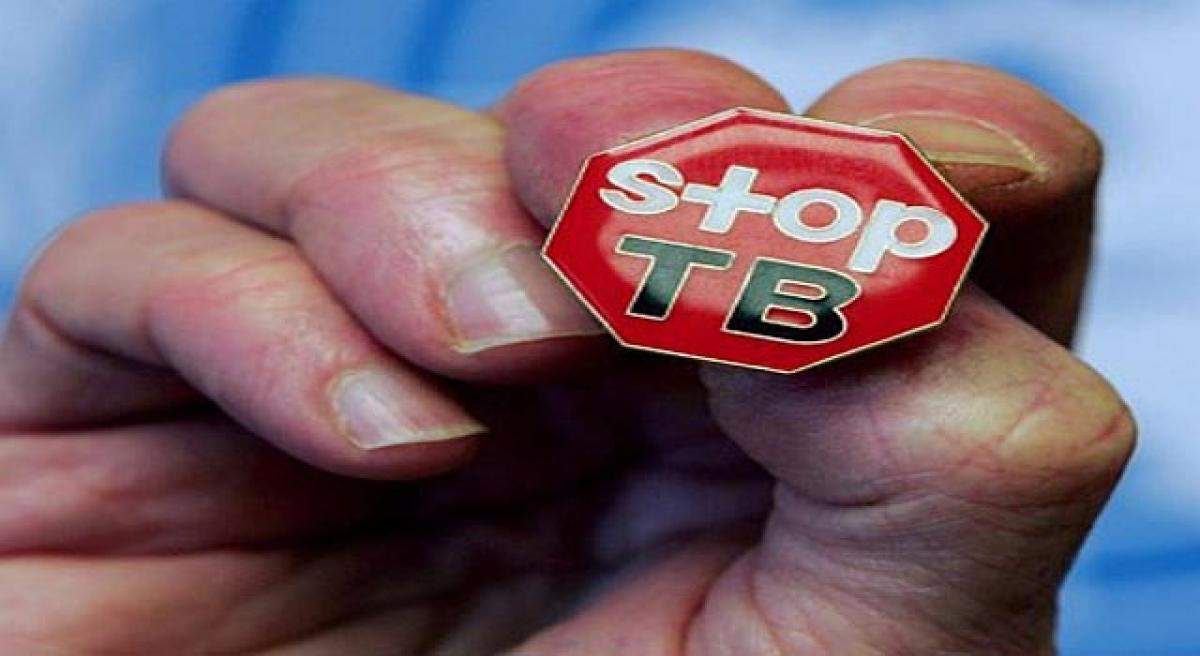Live
- NRIs deny they held secret meeting
- Changed political equations favour TDP in Nellore City
- Modi errs, jittery EC sends notice to Nadda
- New Delhi: LG postpones MCD mayoral polls
- MyVoice: Views of our readers 26th April 2024
- Measuring scavenging value of vultures
- Celebrating 107 Years of Osmania University: A Legacy of Academic Excellence
- Hate-hate relationship new trend in Indian politics
- Gadwal collector briefs on details of voters
- Jupally Krishna Rao takes part in Alampur rallu
Just In

TB is caused by mycobacterium tuberculosis. It is a mainly a disease of economically poor and backward countries. As per year 2011 statistics, there were 3.12 to 4.3 million TB patients in India, while China had around 1.6 million patients.
TB is caused by mycobacterium tuberculosis. It is a mainly a disease of economically poor and backward countries. As per year 2011 statistics, there were 3.12 to 4.3 million TB patients in India, while China had around 1.6 million patients. In 2011, 2.02 to 2.5 million new TB patients were detected. Four years later, the number grew to 2.8 million. In India there are approximately 217 TB patients per one lakh population. TB cases thus rise unabated.
It is estimated that 6.5% of the TB patients are afflicted by HIV. Poverty, pollution and lack of nutritional diet are the main reasons. Every day about over 1000 die of TB. As many as 25% of world TB cases are from India.
Treatment before 1960
Streptomycin injection (1943), PAS-sodium granules and keeping the patients at sanatoria on hills, where oxygen is very high were the only methods employed before 1960. Such sanatoria are found at Arogyavaram, Madanapalli, Ananthagiri, Vikarabad and Erragadda, Hyderabad in patients. Especially nutritional diet needs to be provided along with medicines.
Current modes of treatment
DOT (Direct Observed Treatment) treatment involves a four-drug multidrug therapy (MDT) – a combination of Rifampicin, Isoniazid, Ethambutol, Pyrazinamide. After the introduction of DOT, sanatoria in India were practically closed. The treatment became out-patient, at home (domicillay treatment). WHO supply medicines free, distributed free through TB agency to patients in village.
MDT effective, yet TB not controlled
TB is the disease of poor villagers in India. The method of delivering and administering drugs needs to be improved. Along with MDT, nausea reducing antacids (ranitidine, omeprazole, pantoprazole etc.) need to be provided. There is no proper monitoring, if the patient is taking medicine regularly. Multivitamin tablets and nutrition rich diet also need to be given. MDT should not be taken on empty stomach. The right nutrition diet includes proteins, lentils, meat, eggs and fish.
A TB patient requires 2000 kilo cals rich diet. In the absence of the supply of supplementary medicine/nutrition, patients often discontinue drugs – the reason why TB is not controlled in India. Many urban households employ poor village women for household work like cooking and as ayahs (baby sitters) who may have TB. It is a notified disease but urban hospitals do not seem to reporting to govt. or take effective steps to cure.
A disappointed picture
Improper or discontinue of MDT due to aforementioned reasons is making TB resistant to MDT. It means patients are developing multi drug resistance (MDR). In India there are at least 79,000 MDR patients wherein MDT is no longer effective. All the more alarming feature is that 10% among them reach second stage MDR, extensively drug resistant (XDRTB).
Even the most powerful antibiotics like capreomycin, kanamycin, amikacin, fluroquinoline will not be effective. Very recently after a lapse of 50 years, two new medicines – bedaquilin and delamnid – were discovered and approved by US Food and Drug Administartion (USFDA). These are the hope to treat XDR or MDR TB.
Immediate plan of action
Participation of people’s representatives, government agencies and NGOs is necessary to cure and eradiate TB in India. India has an ambitious programme to eradicate TB by the year 2025. However, WHO is particularly concerned about the ineffective implementation of revised national tuberculosis control programme (RNTCP) to combat the spread multidrug resistant TB (MDR TB) in India.
All the more alarming fact is drug resistant TB (XDRTB) is also in increase. Therefore, block buster drugs like Bedaquiline, Delamanid, approved by USFDA, must be made available to all the TB patients to increase the survival of the patients in India. Of grave concern is "the end of life" humane care is non-existent in government hospitals in India. These untreatable patients are sent home at terminal stage. As a result, the TB infection spreads to the other householders.
Remember TB is most contagious disease. TB patients need to use handkerchief while squeezing, coughing and spitting. Patients should not shake hands. Hygiene prevents the spread of disease. View TB patient as VIP, treat him with sympathy and respect. Eradication of TB is a national priority.
By Dr K Nagaiah & Prof G Srimannarayana

© 2024 Hyderabad Media House Limited/The Hans India. All rights reserved. Powered by hocalwire.com







